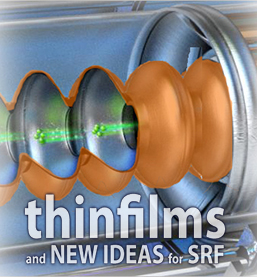Speaker
Description
Nb has been the material of choice for SRF cavities for many years now. However, because of its lower BCS resistance and increased critical temperature of 18.3 K, Nb3Sn has also been pushed as a potential candidate to allow the SRF community to surpass the performance of Nb. The feasibility of depositing Nb3Sn films onto Cu substrates using DC MS has previously been demonstrated at CERN. The resultant films displayed promising RF performance and a critical temperature up to 16 K on Cu substrates [1]. Given the superconducting performance improvements observed with HiPIMS-deposited Nb films [2], its use in the synthesis of Nb3Sn films was pursued. Initial results were promising, displaying a Tc in the region of 15.5 K.
This work focuses on the recent advances made with the elaboration of Nb3Sn films on Cu substrates using bipolar HiPIMS. In line with work completed on DC MS Nb3Sn films, significant differences were observed between high temperature coatings and those deposited without substrate heating, followed by a post-coating annealing. The differences between these approaches, in terms of film microstructure, crystallinity and superconducting performance, as well as future optimisation pathways will be presented.
[1] E. A. Ilyina et al., “Development of sputtered Nb 3 Sn films on copper substrates for superconducting radiofrequency applications,” Supercond. Sci. Technol., vol. 32, no. 3, p. 035002, Mar. 2019, doi: 10.1088/1361-6668/aaf61f.
[2] M. Arzeo et al., “Enhanced radio-frequency performance of niobium films on copper substrates deposited by high power impulse magnetron sputtering,” Supercond. Sci. Technol., vol. 35, no. 5, p. 054008, May 2022, doi: 10.1088/1361-6668/ac5646.

